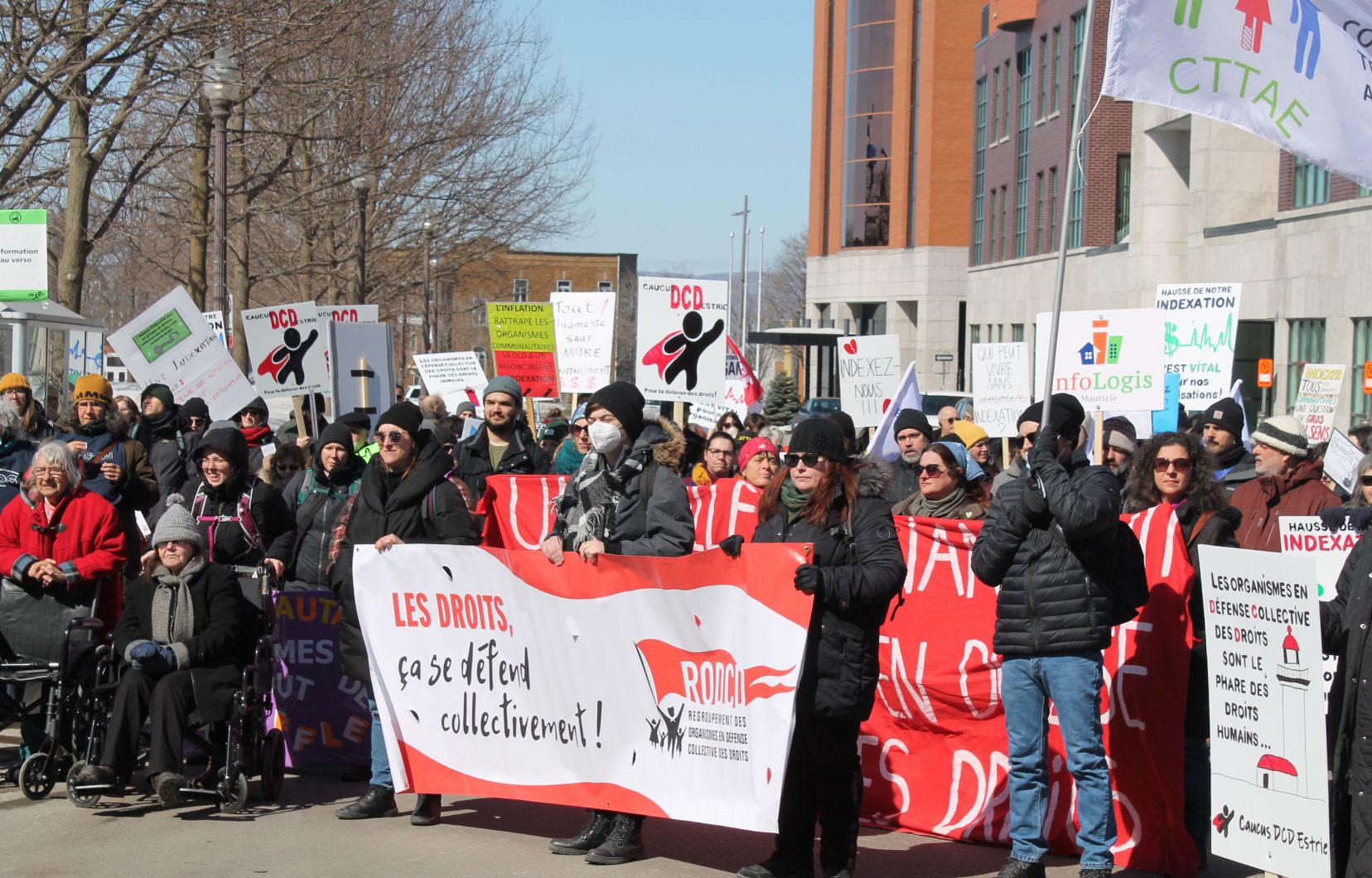This text is part of the special notebook Listening to social causes
While the Quebec government action plan on community action (PAGAC) 2022-2027 offered them less than what they hoped for, the amount of their annual basic funding envelope is not indexed. The groups are therefore getting poorer from year to year, particularly with current inflation. The Group of Organizations for the Collective Defense of Rights (RODCD), which represents nearly 350 groups, is calling for change.
Currently, a collective advocacy group funded solely by the provincial government receives $96,000.
“With that, you have to pay the rent, the telephone, the organization of activities and, above all, the salaries,” lists Sylvain Lafrenière, RODCD coordinator. With so little funding, it is difficult to employ two people full time […] while we are in competition with other sectors. »
A broad mission
However, these organizations have their work cut out for them. Involved in issues as varied as housing, unemployment, working conditions, consumption, the environment, the rights of women, disabled people and the LGBTQ+ community, these groups work on education and mobilization of the public concerned, their representation with elected officials as well as the analysis of the policies in place.
“The impact of the lack of funding is that organizations have difficulty fulfilling all their missions,” says Mr. Lafrenière.
He also points out that certain groups find themselves overwhelmed because government institutions are shedding some of their responsibilities. “The Administrative Housing Tribunal does not respond to people who need basic information on the law or it sends them to the housing committees,” cites Sylvain Lafrenière as an example. However, these committees are there to help people who want to take action. This creates a particularly difficult workload for workers in these groups — the vast majority of whom are women — considering their salary conditions. »
Insufficient funding
After almost 15 years of status quo, in 2019 the government increased funding by $11 million for collective defense groups.
“The initiative stemmed from the Liberal plan to fight poverty, and the CAQ made the funding recurring,” explains Mr. Lafrenière. At the time, we had organizations that were surviving on $50,000 or less per year, and they benefited from two-thirds of the envelope. Other organizations received very little, so now their needs are great. »
In addition, the amount obtained was not indexed. “So, we lost money every year,” summarizes the coordinator.
Things have not improved with the Quebec government action plan on community action 2022-2027.
“The increase was reasonable for 2022 (4.66 million), but for each year that follows, very small amounts are planned, and this does not even cover inflation,” illustrates Sylvain Lafrenière. We will reach $100,000 per organization in 2027. We remain at the bottom of the median for independent community action groups. »
How high are the needs?
Asked how much money a collective rights organization would need to function well, the RODCD coordinator states that “needs vary from one group to another. But for an organization that covers a large territory, with a certain population density, […] I estimate that three to five full-time employees would not be a luxury.” A need that could amount to approximately $300,000 in basic funding per organization, estimates Sylvain Lafrenière.
The government’s offer is therefore far from the mark, despite expectations. “We were told that PAGAC [actuel] would be evolving, but it has not yet evolved, and the arrival of the new minister responsible for Social Solidarity and Community Action (Chantal Rouleau) has not changed anything. It’s as if the government considers the fact that we are underfunded to be normal,” laments Mr. Lafrenière. However, the situation is no longer viable for collective rights defense groups, he recalls: “The indexation of our funding cannot wait for the next PAGAC. »
This content was produced by the Special Publications team at Dutyrelating to marketing. The writing of the Duty did not take part.
